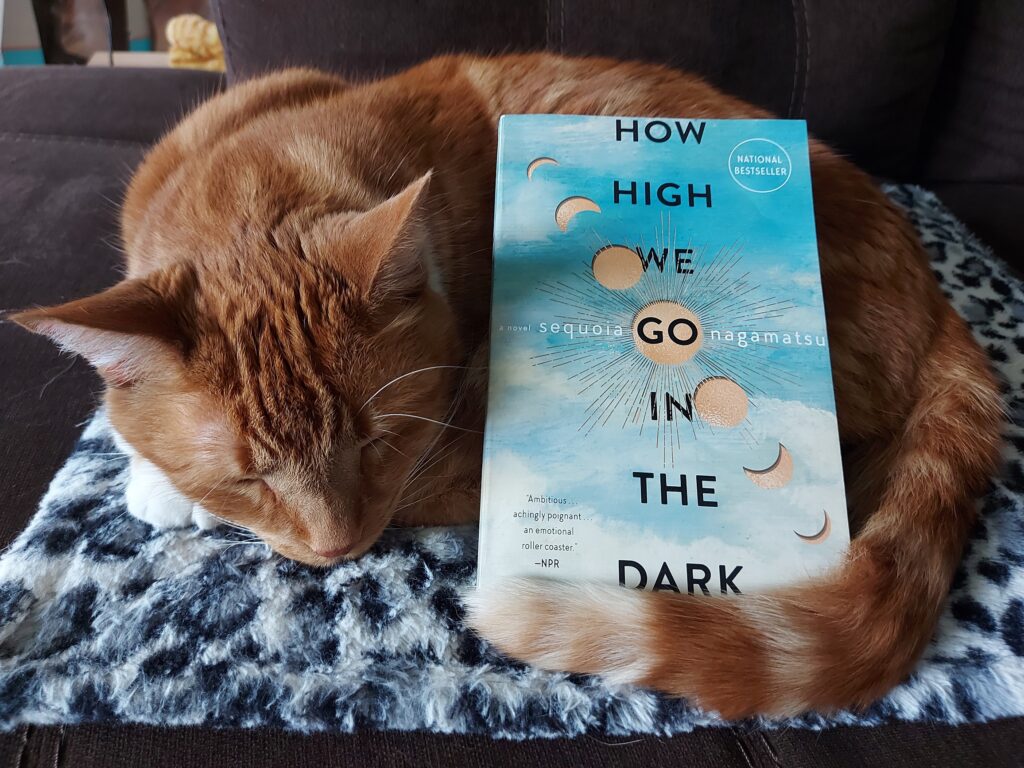How High We Go in the Dark by Sequoia Nagamatsu

How High We Go in the Dark is a novel that reads as a collection of short stories. I am not the biggest fan of the short story genre, but I loved this collection of stories. Each story is a continuation of the overarching theme of the devastating impact of climate change on humanity, and certain characters recur throughout the stories as well as easter eggs from preceding stories. I found this novel to be sad, but now that I have read it, I find myself feeling hopeful that human connections will ultimately prevail and save us.
How High We Go in the Dark opens in the year 2030 when climate change has led to the melting of the Article permafrost, revealing all kinds of prehistoric creatures, bacteria, and viruses that we never knew existed, including the body of a young girl who died from one such prehistoric virus. The Artic plague, as it becomes known, makes it way into world and irrevocably changes our way of life. Children are the first to succumb to the Artic plague, so theme parks are created specifically for sick children who are given one last joyous day before they are euthanized. By the time the Artic plague begins killing adults, the funerary services industry has boomed and become the new form of currency as humans begin thinking up more creative ways to celebrate the dead. The Artic plague is worse and more deadly than Covid in that it liquifies human organs, so scientists grow human organs in animals for organ transplants. One of the stories is about a pig who is used for such purpose and develops the capacity for human speech. It sounds bizarre, but I found this story to be the most affecting in the whole novel. The novel as a whole spans centuries as humans launch a spaceship to travel thousands of years into the future looking for a suitable planet to be our new home.
Sequoia Nagamatsu is an incredibly imaginative writer but the ideas he presents of the future are not completely implausible. He also places more emphasis on the importance of human relationships (and human-pig relationships) than the science/speculative fiction aspects of his stories. Interestingly, Nagamatsu, as an Asian American writer, includes many Asian characters in the novel, but race does not play as an important role as I thought it would, maybe because climate change and the loss of loved ones affects us all regardless of our race.
I don’t think saying that I enjoyed reading How High We Go in the Dark is entirely appropriate, but I think it is a great novel and I am glad that I read it. I find myself still musing over it days after I finished reading it.